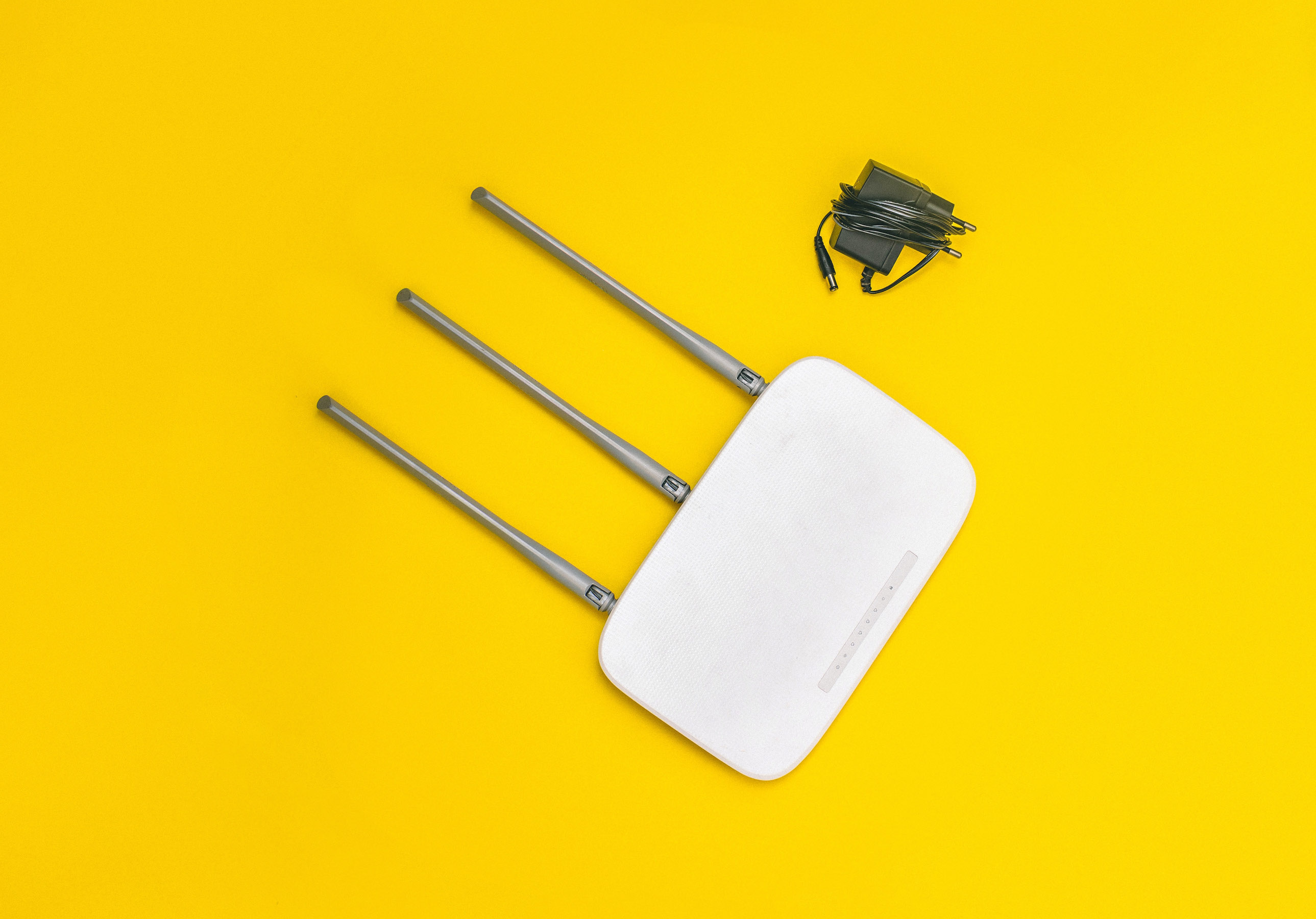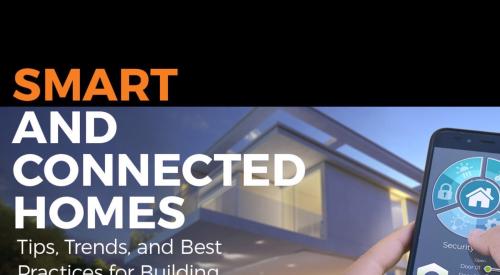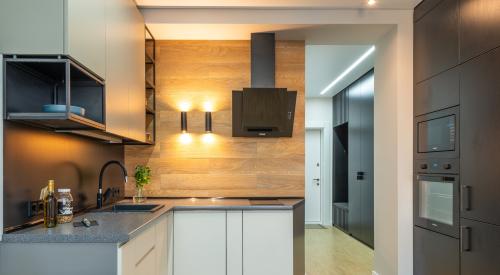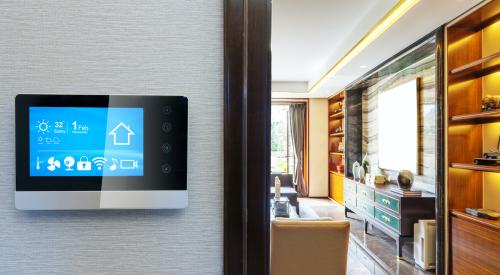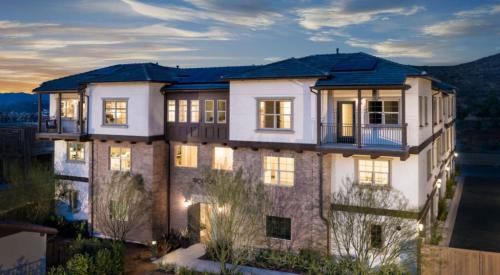From video doorbells to internet-connected thermostats, smart home features have quickly become an expectation in many new homes.
“Coldwell Banker recently did a survey, and smart home features and capabilities as part of the home being purchased was ranked as among the top most desired capabilities by over 81 percent of respondents,” noted Colin Billings, CEO and founder of smart lighting firm Orro.
But builders frequently wonder how they can manage smart home construction. They aren't sure how they can meet those buyer expectations without slowing down production, impacting prices and margins, or getting tripped up by either questions during the sales process or or post-sale customer service involved with smart homes.
“Most builders have extremely talented teams where construction managers know how to plum and frame a home,” explained Felicia Ratka, president of Toll Brothers’ TBI Smart Home Solutions. “But technology has always been an area that builders have kept at arm’s length, because the tech changes so much—and so often. It’s really hard to expect those construction managers or project managers to keep up with (all the changes in home) technology.”
Ratka and Billings, along with Ron Wanless, owner and founder of Technology Design Associates, discussed all these issues and more in May during Smart and Connected Homes: Tips, Trends, and Best Practices for Building Smart Homes, a UTOPIA webinar. Dave Barista, UTOPIA’s content director, moderated the smart homes discussion. The full webinar is now available for viewing on demand.
Best Practices for Building Smart Homes
Based on their discussion, here are 7 strategies for builders interested in improving their smart home offerings for today’s buyers.
1. Know what you’re trying to do.
“It’s really about the benefits these technologies bring to the prospective buyers,” said Billings, who noted that the advantages of smart homes typically fall into four categories for consumers: comfort and convenience, peace of mind, energy efficiency, and wellness.
2. Invest in the network of your smart homes.
“I can’t say it enough: The home network is the backbone of the home,” Ratka emphasized. “Yes, you need framing, and yes, you need a roof. But once you are living in that home, everything is connected: cell phones, tablets, gaming systems, televisions, appliances. The count (of devices) could be endless, and they all rely on a solid home network.” Accomplishing that requires designing a home network that can handle the online demands of today’s lifestyles. “People in the work-from-home situation are reaching out and requesting upgrades to their networks not only for higher speeds, but also for the ability to have multiple users on the network at the same time with high throughput so that they can have home schooling, video meetings, and more at the same time,” said Wanless. The security of that network is also a growing concern. “Everybody is very concerned when they are doing work from home that their network is secure and is not being hacked by random people outside of their home,” he added.
3. Think about creating an ecosystem in your smart homes for your buyers rather than a patchwork of overlapping, disjointed tech systems.
“In today’s smart home environments, if you have one smart home device in your house, on average you have eight,” said Billings. “And so the retail experience of multiple separate devices with multiple apps on your phone quickly becomes very complicated. We really encourage our builders to think about how they’re bringing all of the systems together under a single application or system that makes it convenient for the home buyer.”
4. Manage buyer expectations.
The upside of DIY home technology is that the market for smart homes has expanded dramatically; it’s no longer limited to high-end custom builds for homeowners with big budgets. But the downside is that builders must now manage the expectations of would-be buyers about the cost and capabilities of these features in their smart homes. “One of the big issues people are coming across is that quality technology in the home is not the same as going to a [big box store], picking up a couple of items, and working through a few apps,” Wanless said. “It’s certainly something that people can accomplish on their own, but making sure those items are secure, that clients--and not just the techie kids in the house--are able to operate them, and integrate and function properly usually takes [additional equipment]. Those items are much more expensive than the $99 pieces of equipment that people think of when they think of this technology.”
5. Outsource the technology piece.
“Being in this space for 20 years, we have learned that technology should be sold by technology experts,” said Ratka of Toll Brothers, which delivered nearly 8,500 homes in 2020. “We don’t rely on sales associates to sell technology or smart home solutions. We want them to focus on selling homes.” Toll makes this happen by partnering with local integrators in its markets, who meet with buyers to design, build, and customize Toll’s technology packages in their homes. “This allows us to give buyers the ability to personalize their homes, despite being in a production build environment,” she explained.
6. Standardize as much as possible for smart home construction and partner efficiencies.
Every buyer who purchases a new Toll Brothers home gets a keyless lock, wi-fi thermostats, and wi-fi garage control, according to Ratka, which gives the big builder the basic framework for its smart home offerings. “It’s important to understand how smart home technology fits into the builder world,” said Ratka, who added that Toll also uses structured wiring cabinet and AV closets to provide dedicated, accessible spaces for homeowners, integrators, and all the other tech equipment (receivers, cable boxes, and more) in today’s homes. “If we can standardize on the location of an AV closet, we then have visibility to what the wiring looks like so that when we provide those options to (an integrator), we’re able to understand what that writing requirement looks like.”
7. Think beyond voice.
“As users begin to settle into their smart homes, voice is only one of the ways they want to connect” with their systems, noted Billings, who said that, depending on the command, it may be easier for a homeowner to touch a few buttons. “It’s really important to think about how you are providing voice and touch interaction to control your system,” he said. “Sometimes talking is just not an appropriate way of controlling it.”
Want additional insights and advice about building and selling smart and connected homes? Watch Smart and Connected Homes: Tips, Trends, and Best Practices for Building Smart Homes on demand for free (short registration required for UTOPIA non-members).


